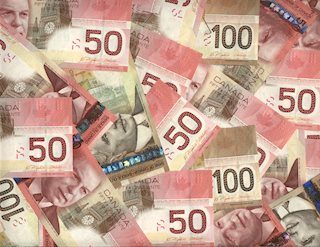USD/CAD remains below 1.3500 due to higher Oil prices
|
- USD/CAD extends its losing streak due to higher Oil prices amid rising geopolitical tensions.
- WTI price gains ground due to rising fears of a broader Middle-East conflict and the potential shutdown of Libyan Oil fields.
- The US Dollar lost ground due to rising odds of a Fed rate cut in September.
USD/CAD loses ground for the third consecutive session, trading around 1.3480 during the early European hours on Tuesday. This downside of the USD/CAD pair could be attributed to the improving commodity-linked Canadian Dollar (CAD) amid rising crude Oil prices.
Crude Oil prices have surged due to concerns over potential supply disruptions, driven by fears of an escalating conflict in the Middle East and the possible shutdown of Libyan oil fields. In parallel, Hamas has rejected Israel's new conditions in ongoing ceasefire negotiations in Egypt, insisting that Israel comply with the terms set forth by US President Joe Biden and the UN Security Council.
However, US Air Force General C.Q. Brown, chairman of the Joint Chiefs of Staff, told Reuters early Tuesday that concerns about an imminent broader conflict in the region have diminished. An exchange of fire between Israel and Lebanon's Hezbollah did not escalate further.
Oil prices gained support from increasing expectations of US interest rate cuts, which could stimulate fuel demand. Lower borrowing costs are likely to boost economic activity in the United States, the world's largest Oil-consuming country.
The US Federal Reserve (Fed) Chairman Jerome Powell stated at the Jackson Hole Symposium on Friday, "The time has come for policy to adjust." However, Powell did not specify when rate cuts would begin or their potential size. According to the CME FedWatch Tool, markets are fully anticipating at least a 25 basis point (bps) rate cut by the Federal Reserve at its September meeting.
Canadian Dollar FAQs
The key factors driving the Canadian Dollar (CAD) are the level of interest rates set by the Bank of Canada (BoC), the price of Oil, Canada’s largest export, the health of its economy, inflation and the Trade Balance, which is the difference between the value of Canada’s exports versus its imports. Other factors include market sentiment – whether investors are taking on more risky assets (risk-on) or seeking safe-havens (risk-off) – with risk-on being CAD-positive. As its largest trading partner, the health of the US economy is also a key factor influencing the Canadian Dollar.
The Bank of Canada (BoC) has a significant influence on the Canadian Dollar by setting the level of interest rates that banks can lend to one another. This influences the level of interest rates for everyone. The main goal of the BoC is to maintain inflation at 1-3% by adjusting interest rates up or down. Relatively higher interest rates tend to be positive for the CAD. The Bank of Canada can also use quantitative easing and tightening to influence credit conditions, with the former CAD-negative and the latter CAD-positive.
The price of Oil is a key factor impacting the value of the Canadian Dollar. Petroleum is Canada’s biggest export, so Oil price tends to have an immediate impact on the CAD value. Generally, if Oil price rises CAD also goes up, as aggregate demand for the currency increases. The opposite is the case if the price of Oil falls. Higher Oil prices also tend to result in a greater likelihood of a positive Trade Balance, which is also supportive of the CAD.
While inflation had always traditionally been thought of as a negative factor for a currency since it lowers the value of money, the opposite has actually been the case in modern times with the relaxation of cross-border capital controls. Higher inflation tends to lead central banks to put up interest rates which attracts more capital inflows from global investors seeking a lucrative place to keep their money. This increases demand for the local currency, which in Canada’s case is the Canadian Dollar.
Macroeconomic data releases gauge the health of the economy and can have an impact on the Canadian Dollar. Indicators such as GDP, Manufacturing and Services PMIs, employment, and consumer sentiment surveys can all influence the direction of the CAD. A strong economy is good for the Canadian Dollar. Not only does it attract more foreign investment but it may encourage the Bank of Canada to put up interest rates, leading to a stronger currency. If economic data is weak, however, the CAD is likely to fall.
Information on these pages contains forward-looking statements that involve risks and uncertainties. Markets and instruments profiled on this page are for informational purposes only and should not in any way come across as a recommendation to buy or sell in these assets. You should do your own thorough research before making any investment decisions. FXStreet does not in any way guarantee that this information is free from mistakes, errors, or material misstatements. It also does not guarantee that this information is of a timely nature. Investing in Open Markets involves a great deal of risk, including the loss of all or a portion of your investment, as well as emotional distress. All risks, losses and costs associated with investing, including total loss of principal, are your responsibility. The views and opinions expressed in this article are those of the authors and do not necessarily reflect the official policy or position of FXStreet nor its advertisers.